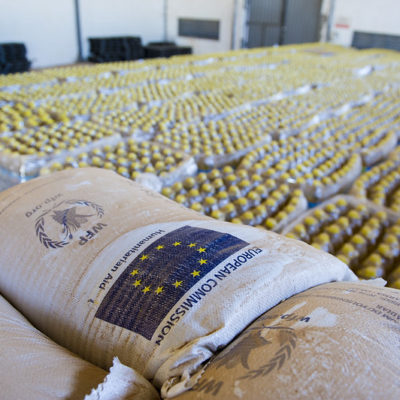Some evidence and analysis on the effects of the use of WhatsApp and social media on conflict and violence within South Sudan.
In the summer of 2022, I spent some time in South Sudan, where I was working as a researcher for my Masters thesis. One afternoon, I sat with a community leader discussing the emergence of technology in rural areas of the country. During our discussion, I was both intrigued and disturbed to hear stories regarding the use of WhatsApp in the organisation and planning of conflict and how the social media platform is also being used to coordinate violence and mobilise forces during attacks. WhatsApp is the most widely used messaging platform worldwide, with an estimated 2 billion monthly active users. In South Sudan, it has been hailed by many of its users as the country’s alternative radio and television. It has been pivotal in connecting isolated rural communities, is used daily for sharing information and news, and is a tool for conducting business, domestic work and planning farming activities, such as cattle relocation. However, it became clear that there is a more negative aspect to this particular social media platform.
During this conversation with the community leader, what struck me was the casualisation and normalisation of violence and killing, which had been exacerbated and amplified through the use of instant messaging. I learned that as a disagreement or feud between (predominantly rural) communities develops, WhatsApp groups are formed where the involved parties can negotiate and discuss where and when to come together to resolve their disputes. All too often this results in armed community members using WhatsApp to coordinate where and at what time their respective forces should gather and begin firing at each other. An added complication to this use of social media in organised violence exists in light of the cultural taboo of killing family members. In some circumstances, it is possible that disputing communities have family members on opposite sides of a conflict. In such cases, smaller breakaway group chats are often created among these family members, enabling them to avoid injuring or killing each other. For instance, by positioning themselves diagonally away from one another, they may be able to reduce the chances of accidental direct family-on-family violence, thereby avoiding committing a taboo.
One individual in Tonj East emphasised that “… in our [WhatsApp] group, we plan attacks, defend our community, mobilise each other; all these are possible because of WhatsApp.”[i] Others noted that during times of conflict, communities use social media to communicate with their members or reach out for support in various forms, including requesting money to buy food, guns, ammunition or other supplies, or pass along information about the movements of the communities they are fighting in order to coordinate ambushes or attacks. WhatsApp has also been used to entrap or confuse opponents, with one individual claiming that “…during the conflict, I have seen people putting out misleading information to mislead their enemy so that they fall into their ambush.”[ii]
During my time in South Sudan, it was often difficult for those I held conversations with to be completely open, as many were concerned that giving examples was equivalent to informing on their friends and allies, and were therefore reluctant to reveal how their community launched or coordinated attacks. However, it was clear through these conversations that WhatsApp was the platform most commonly used to plan and coordinate such attacks. In part, as it is already the most widely used messaging service within the country (and globally with almost one billion users), but also because, due to its end-to-end encryption, information shared can only be accessed by group members. This ability to keep information under the radar of authorities or other rival groups makes WhatsApp a particularly attractive tool for planning illegal or destructive activities.
On a broader scale, it is clear that the use of social media is a fundamental, constantly evolving tool within modern conflict, typically amongst quarrelling or disputing rural communities, to maximise the effectiveness of attacks. WhatsApp may be used to coordinate attacks and call for reinforcements during conflict, while also being used to highlight where targets are or to provide information on where and how to launch attacks on target communities or settlements. It has also been applied in larger scale conflicts, as seen in the Russian invasion of the Ukraine, though more so in a propaganda role, to incite violence, recruit or to coordinate movement.[iii]
Comparatively, in South Sudan, social media is mainly being used as an essential tool for logistics, planning and coordinating ambushes or robberies. One such example occurred in 2023, where 13 people were attacked and robbed on the roads in Tonj East, an administrative district in central South Sudan. One of the apprehended thieves revealed how they had coordinated the ambushes and robberies along the route using WhatsApp. The accused detailed how members of the group would sit and observe the markets, identifying and monitoring traders to see which roads they would travel on, and then use WhatsApp to instruct their colleagues where on the roads to lay ambushes and who to target. During the 13 reported attacks, 3 people were reportedly killed. Similarly, in January 2022, the ambush and killing of 7 Murle traders in Bor, a city 200km north of Juba, appears to have been coordinated by groups of youths via social media. Prior to this particular incident, two youths from Bor had been killed by Murle youths; these being two groups whose relations have been strained for decades.[iv] The information that these youths had been killed was circulated among the Bor youth on social media, who then mobilised, met, and planned a revenge attack on the Murle community. One youth who was involved later confirmed that the social media platform that they had used to coordinate and execute their plan was WhatsApp.
These examples and other similar reports seem to point to the widespread use of WhatsApp to coordinate and initiate violent attacks on opposing particular groups or of people or communities during times of conflict. However, the use of social media in rural conflict is an area that is under-researched and one that needs to be better understood in order to begin addressing the issue of casual violence and killing in countries such as South Sudan. This is particularly relevant in the context of delivering humanitarian aid and international development programmes, not only in South Sudan but possibly in a wider context and among rural communities globally.
While social media can be harmful during crises, it is important to also highlight more positive aspects of the use of WhatsApp during times of conflict. Social media can be used to pass information onto policing and crisis response authorities, meaning public interventions can be initiated in a timely manner, potentially saving lives. For example, in January 2022, during an attack on Baidit Payam of Bor County in which 37 people were killed, information following the incident was shared on social media so that medical teams could be dispatched to the scene where they were needed, likely reducing further loss of life. The instant aspect of WhatsApp can also be pivotal in ordering evacuations or providing warnings of impending attacks. With the social media platform used by roughly one in seven people on the planet, it is unsurprising that the platform is often used as a hotline, helping to report incidents or to ask for aid, as highlighted by the International Committee of the Red Cross in Yemen in 2015[v], or used a public health information sharing platform, as seen in West Africa during the Ebola Crisis. [vi]
The use of WhatsApp has not occurred in a vacuum, therein creating violence where previously there was none. As discussed, large swathes of South Sudan have suffered from intercommunal conflict, cattle raiding, violence and robberies for decades, predating any form of social media. However, I believe an argument can be made that social media platforms, such as WhatsApp, have expedited and amplified these incidents. This is based primarily on the conversations and discussions I held during my time in the country, hearing first-hand the dangers of social media used to coordinate violence and conflict. Of course, there are positive aspects of the use of social media such as WhatsApp, however further research and discussions must be held in this area.
This research is particularly required in South Sudan, which currently has one of the lowest levels of ICT penetration worldwide[vii]. With ICT penetration remaining a problem for the country and with various initiatives beginning to address this issue with the expansion of mobile communications, more work must be done to address the negative use of social media to perpetuate violence and disinformation, which is already being seen and reported.[viii] For instance, further education programs with influential figures, particularly within rural communities, such as youth leaders or elders regarding the dangers of misinformation, disinformation or the spread of hate speech via social media and WhatsApp.[ix]
Another noteworthy option could be a replication of the automated flagging currently employed within the public health sector. Before prescribing certain drugs, medical professionals will receive an automated digital warning before confirming their prescription, in order to minimise instances of over-prescribing or general prescription error.[x] If, for example, WhatsApp users type certain key words indicating violence, a system could be introduced where an alert appears on the user’s device if there is certainty regarding whether the message should be sent. Though not a cure-all solution, it may reduce the overall amount of violence and conflict being coordinated via this particular platform. This option, perhaps in coordination with more long-term solutions like education programs, could prove to be an effective solution to this issue in South Sudan, and across the globe.
Acknowledgements
This work would not have been possible without the research support from my good friend and former colleague, Abraham Diing Akoi. Abraham is an experienced researcher and research manager for Accord Consulting in South Sudan, and has published on displacement, protection, social networks, youth and livelihoods, food insecurity and public authority. He is currently engaged in research projects for LSE, the World Food Programme and UN peacekeeping mission.
References:
[i] Conversation with a youth from Tonj East – July 2022
[ii] Conversation with a community leader from Tonj East – July 2022
[iii] Russia, Ukraine and Social Media and Messaging Apps – Questions and answers on platform accountability and human rights responsibilities. 2022. Human Rights Watch. Link
[iv] For further information about the conflict and combatants please see:
- Overcoming long-standing feuds in greater Jonglei, South Sudan. (n.d.) Saferworld. Link
- South Sudan – (n.d.) World Directory of Minorities and Indigenous Peoples. Link
- Bor of South Sudan. (n.d.) Peoples Group. Link
[v] Yemen: International Red Cross and Red Crescent Movement condemns attack on ambulance in Taiz. 2015. ICRC. link
[vi] Humanitarian Futures for Messaging Apps. 2020. ICRC. link
[vii] Digital 2023: South Sudan. 2023. DataReportal. Link
[viii] South Sudan – the Challenges and Opportunities of Mobile for Displacement – Affected Communities. 2023. Acland,S. link
[ix] Social media and the crisis of urban inequality: transnational analyses of humanitarian responses across the Middle East, South Asia and Africa. 2023. Sanyal, R. and Bergby, S. and Lien, I. link
[x] Making electronic prescribing alerts more effective: scenario-based experimental study in junior doctors. 2011. Scott et al. link



